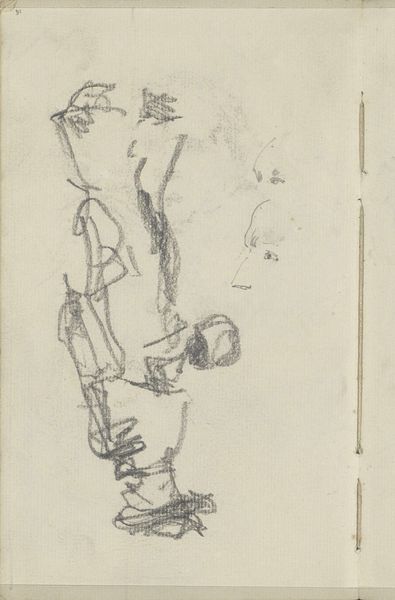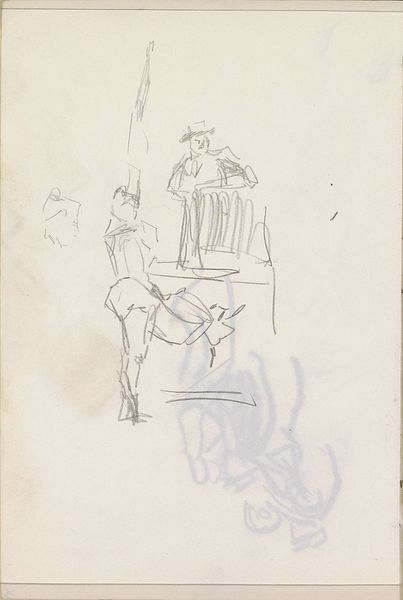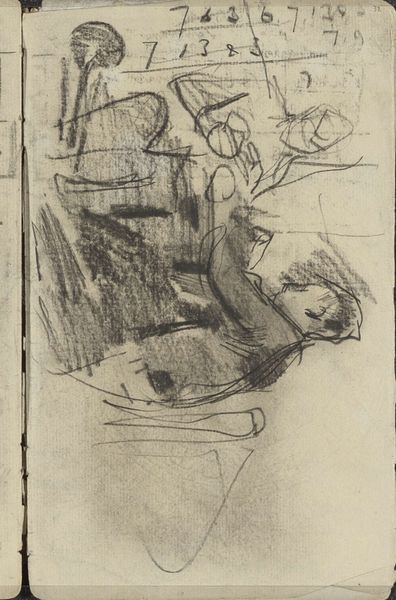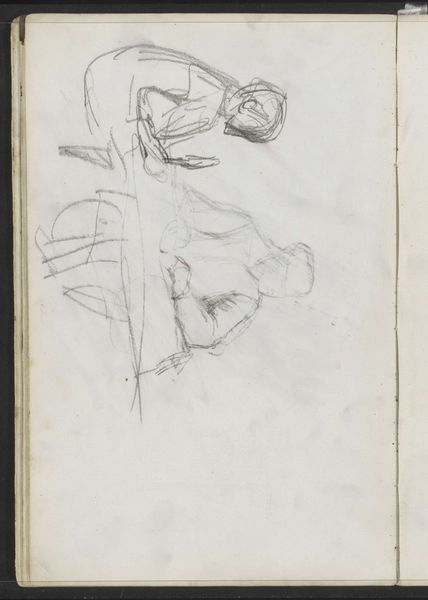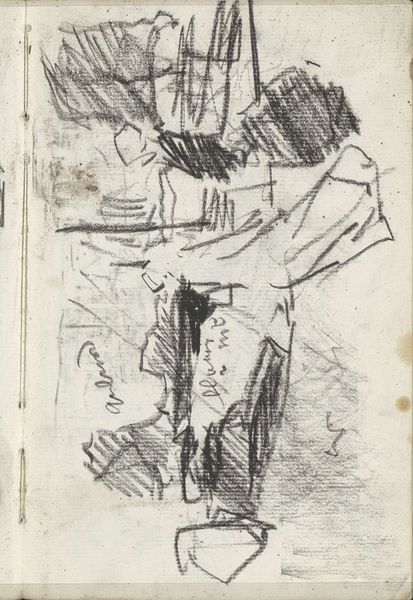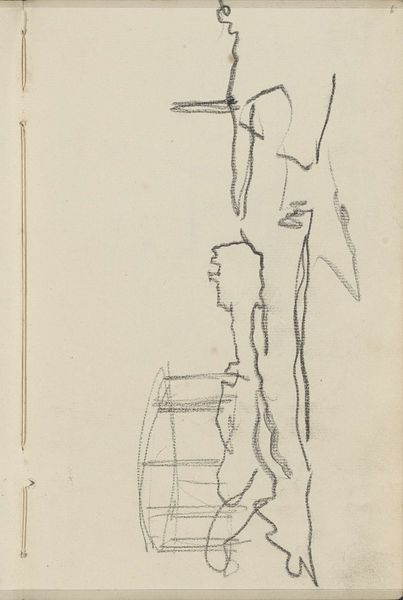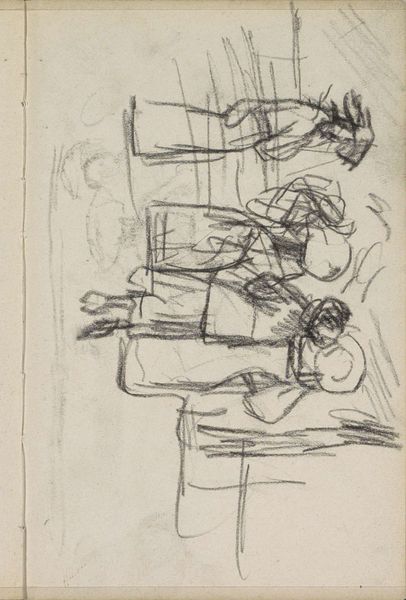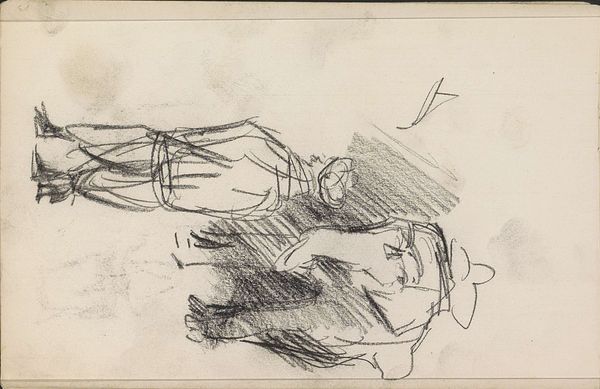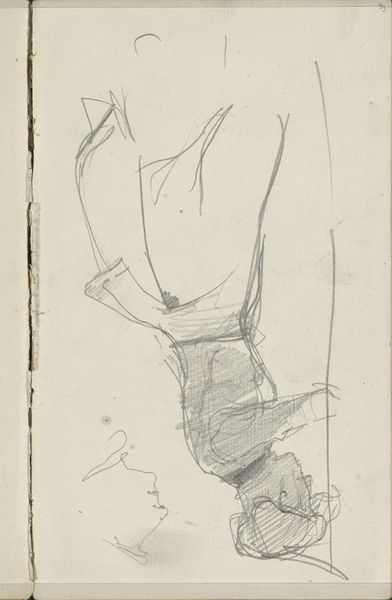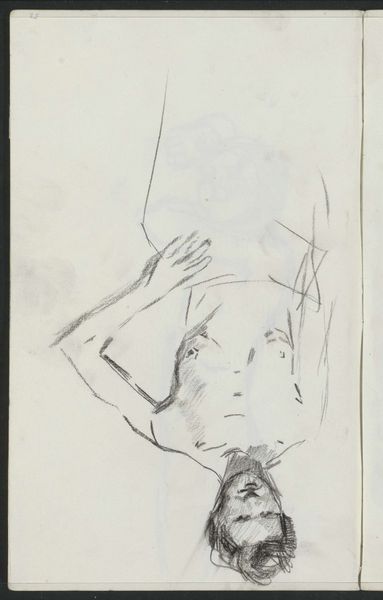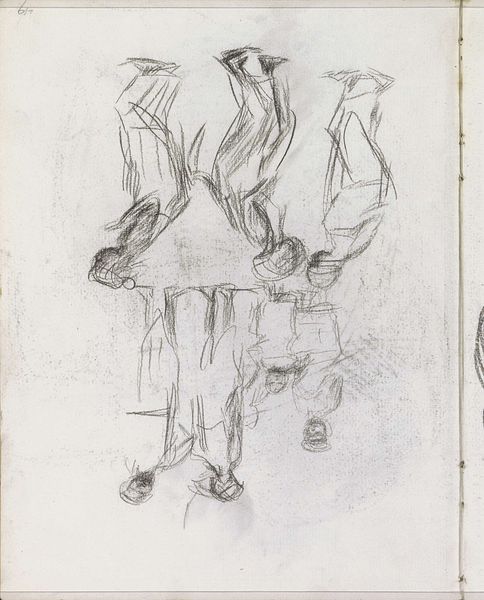
Copyright: Rijks Museum: Open Domain
Curator: Here we have Isaac Israels' "Studies van een vrouw met een baby op haar rug," likely dating between 1875 and 1934, part of the Rijksmuseum's collection. What's your initial take? Editor: Immediate impression? Fleeting. It's a snatched moment, raw and tender, almost like a secret glimpse into a mother's world. I find it incredibly intimate, like stumbling upon someone's private musings. Curator: Indeed. It's less a finished piece and more a window into Israels' creative process. Notice the varying levels of detail, suggesting he was capturing the essence of the pose rather than striving for photographic realism. It suggests an engagement with Impressionist principles of capturing fleeting moments. Editor: Absolutely! It reminds me of flipping through a worn sketchbook, that thrill of discovering half-formed ideas. There’s this sense of immediacy, seeing the artist grappling with form and movement. What I adore most is its honesty; no pretenses, just pure observation. Curator: The medium, pencil and ink, is crucial. They facilitate speed, aligning with Israels' objective: not a posed portrait, but a record of everyday life. Consider how such studies inform our understanding of the social position of working mothers. It reveals what Israels chose to observe, and what museums choose to collect and exhibit. Editor: Precisely. Each line is so deliberate, but simultaneously loose. I keep wondering about the mother in these studies; was she even aware she was being sketched? There is something powerful in that shared unawareness, a beautiful collaboration between subject and artist without either truly acknowledging the other's role in the exchange. It feels incredibly authentic and real. Curator: Ultimately, these studies offer an insightful look into the creative mind. By presenting the intimacy between mother and child, he implicitly challenges certain academic conventions that might prioritize historical or mythological subjects. The act of capturing that everyday reality on paper in and of itself makes a powerful statement. Editor: It is almost as if the unfinished quality amplifies the beauty, letting our imaginations fill in the blanks, creating our own intimate stories around that fleeting connection of mother and child. For me it evokes the enduring timeless essence of maternal care. Curator: It has been a valuable discussion. We examined how social realities influence the subjects chosen and the narrative conveyed by art. Editor: And I hope we highlighted its poetic immediacy. The beauty lies not just in what's depicted, but also in what is implied and in our own individual response.
Comments
No comments
Be the first to comment and join the conversation on the ultimate creative platform.
